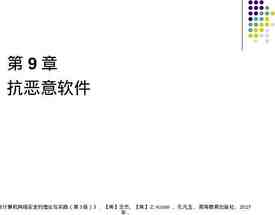Lincoln Index ESTIMATING POPULATION SIZE
13 Slides396.26 KB
Lincoln Index ESTIMATING POPULATION SIZE
BACKGROUND: The best way to measure the size of a population is to count all the individuals in that population. When determining the population sizes of trees or other relatively immobile organisms, this method is, indeed, practical. If the organisms were mobile, however, such as fish, counting every individual would be difficult. Some individuals might be counted twice or not at all, since the experimenter would not know which fish had been counted and which had not. Ecologists use a method called the Lincoln Index to estimate the size of a population.
BACKGROUND: In this experiment, you will model a population of mobile organisms, capture and mark a sample of the population, and then capture a second and third sample. You will then estimate the size of the model population using the Lincoln Index. The accuracy of the Lincoln Index will be inferred by counting the model population.
To use the Lincoln Index, scientists capture a sample of the population they want to measure. They mark these individuals and release them. After waiting several days, the scientists return and capture another sample. These individuals are not marked; however, some of the individuals in the second capture may have the first marking.
The scientists then use the following formula to estimate the size of the population. # Marked in 1st Sample # Marked in 2nd Sample Total Population Total Caught in 2nd Sample
The Lincoln Index makes several assumptions that must be met if the estimate is to be accurate. These assumptions are: A.) The population of organisms must be closed, no immigration or emigration. B.) The time between samples must be small compared to the life span of the organism C). The marked organisms must mix completely with the rest of the population during the time between sampling.
Copy the following down in your journal: Trial 1 Trial 2 Trial 3 Trial 4 N2 N2 N2 N2 R R R R N1 Note: N1 will be the same for all 4 trials Total Population (N2)(N1) (R)
MATERIALS: paper bags, dry beans, markers PROCEDURE: EXPERIMENT 1 1.) The paper bag represents the habitat of your model population. Add several handfuls (3-4) of dry beans to the habitat. The beans represent your organisms in your habitat. NOTE: Do not try to count the exact number of beans until the end of the experiment. 2.) Remove a small handful of beans from the model habitat. This handful will be your first sample. The sample should be at least 20 beans but less than half the total population. 3.) Using a colored marker, mark all organisms in this first population. Mark them well enough to be easily identified if recaptured. Count the beans and record this number as N1 for all trials on the data sheet. Let the marks dry on the beans.
4.) Place the beans from your first sample (N1) back into the habitat. Mix them well. 5.) Without looking, one member of the group should remove another handful of beans. The sample size should be about the same as the original. Count the total number of beans in the second capture. This is your N2 value for trial 1. Notice that some of the beans will have the marking from the first capture. Count these organisms and record this number as R for trial 1. 6.) Return the organisms to their habitat. Mix well. 7.) Repeat steps 5 and 6 three more times giving you a total of four trials or four recaptures.
POST LAB QUESTIONS: Answer these in your lab journal. 1. Calculate the average for your N2 and R values. 2. Use your data to estimate the size of the population in the model habitat. Use the Lincoln Index formula for your calculation. Show your work using the average of N2 and R. Total Population (N2)(N1) (R)
POST LAB QUESTIONS: Answer these in your lab journal. 3. Compare the population estimates calculated with the Lincoln Index to the actual size of the population. (Count the total number of beans in your population!) Calculate a percent error. Percent error Lincoln Index – Actual Actual x 100
POST LAB QUESTIONS: Answer these in your lab journal. 4. Compare your results with other groups. Which group’s estimates was most accurate? Compare the sample sizes of the groups. Is there an inference you can draw about the size of the samples/populations and the accuracy of the Lincoln Index? 5. Why is it important that the time between first and second samples be a short time compared to the organism’s life span?
POST LAB QUESTIONS: Answer these in your lab journal. 6. How can a data collector determine whether the population being studied is growing or declining? 7. The United States conducts a national census of its people every ten years. Numbers collected from this census are used to determine many things in each state from the number of seats awarded in the House of Representatives to amounts of federal dollars for that state. Could a sampling technique such as this be used to calculate the population of the United States? Explain:


















